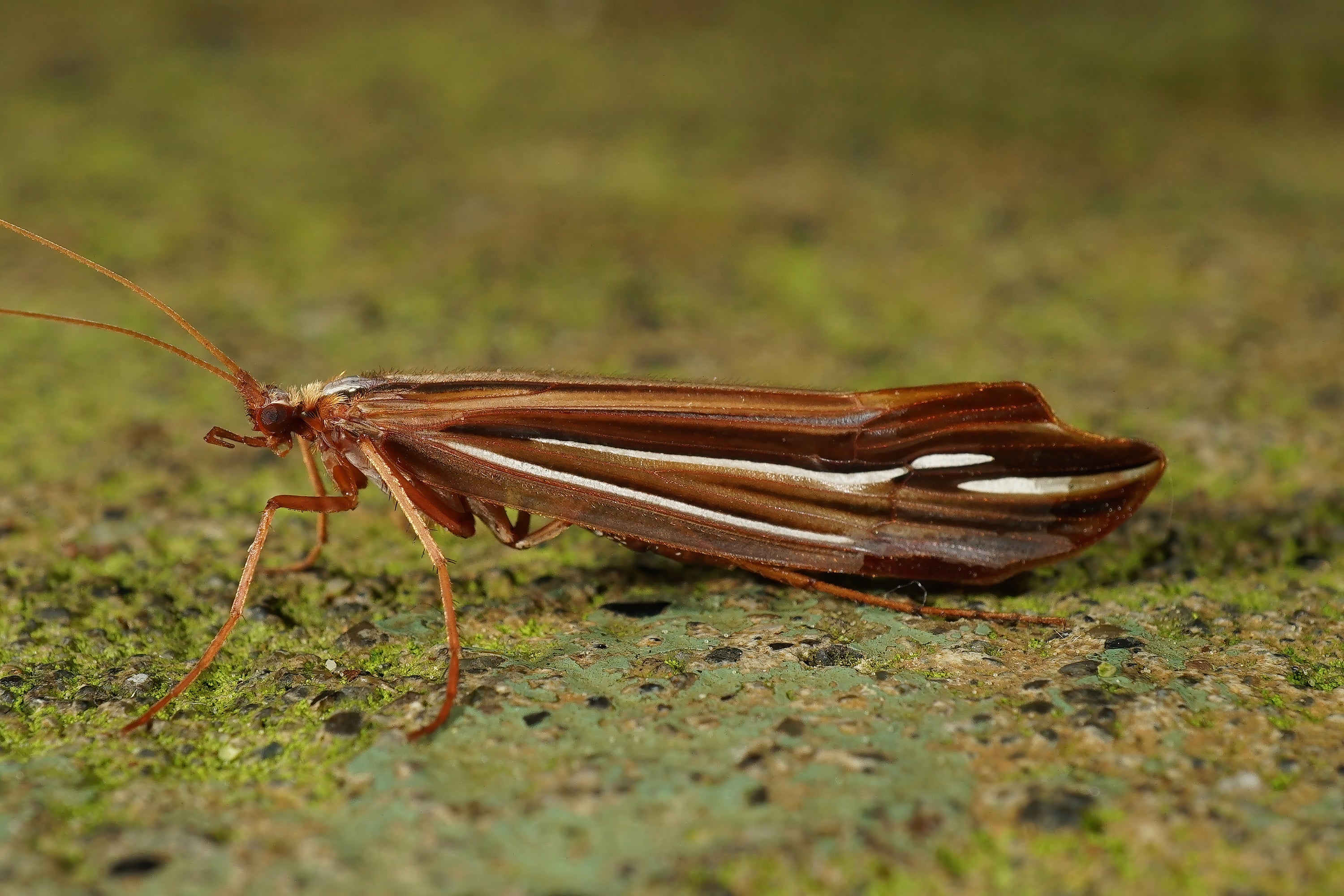The Caddis have a so-called Holometabol development, a complete transformation. They go from egg to larva before becoming a pupa and finally hatching into a winged and fully grown insect. In Sweden, there are an estimated 220 species distributed among 19 families. The vast majority of caddis are very similar to each other, as opposed to, for example, mayflies. This means that we as fly fishermen and fly tyers do not need knowledge of each species or even its family. Instead, it's about tying or buying imitations that work well and imitate the caddis as well as possible, but focus on a few colors and sizes. Therefore, the category of caddis flies will not be as accurate as for mayflies but will instead revolve around the different families that exist. The vast majority of winged caddis range in color from light brown to black and can be either solid or spotted.
Caddis are the most important food for many fish species and are abundantly spread all over Sweden. The advantage is that it does not require a lot of specific imitations, but a couple of different colors and sizes of larvae, pupae, emergers and winged caddis will do. A well-thought-out selection is a smart move that will improve the conditions at the fishing water and definitely increase your chances of good fishing, we know that at J:Son.
Caddis hatch either freely in the water surface or by the pupa climbing onto stones or vegetation in the water or next to the shore. They are found in both flowing and still water. Egg-laying often takes place by the female bouncing forward on the surface of the water at high speed and then spreading her eggs. In this process, they mostly resemble small racing boats and you can advantageously fish your imitation at a fairly high speed on the surface of the water. At the same time, there are some species of caddis that lay their eggs by diving down or climbing down via, for example, reeds or stones, to lay their eggs on the bottom. In the larval stage, it is common for them to build a shelter around their body of gravel or plant material, these are usually called “cased caddis”. Some larvae instead dig deep into the bottom where they hide, and finally there are those that cling to, for example, a rock and spin a net that resembles a miniature trawl in which the food is caught. These nets are made of silk and a couple of species of caddis instead uses this silk to build its house around its body and then attaches itself to a stone.
The larvae should be fished close to the bottom, preferably on the bottom. The pupae are found throughout the water mass as they only emerge before the hatching stage. A smart move during hatching is to fish either a winged caddisimitation and a pupa or emerger at the same time, alternatively emerger and pupa. This is done most easily by attaching a short piece of tippetmaterial, approximately 20-40 cm, to the hook bend of the fly that sits at the end of the leaderfrom the fly line. Use a regular bait knot to attach the tippet in the hook bend. Then attach the second fly to the end of that tippet. Using an imitation of a winged caddis that is fished dry on the surface as the main fly and a pupa as the anchor fly, the dry fly simultaneously functions as a indicator, a sort of float in short.

